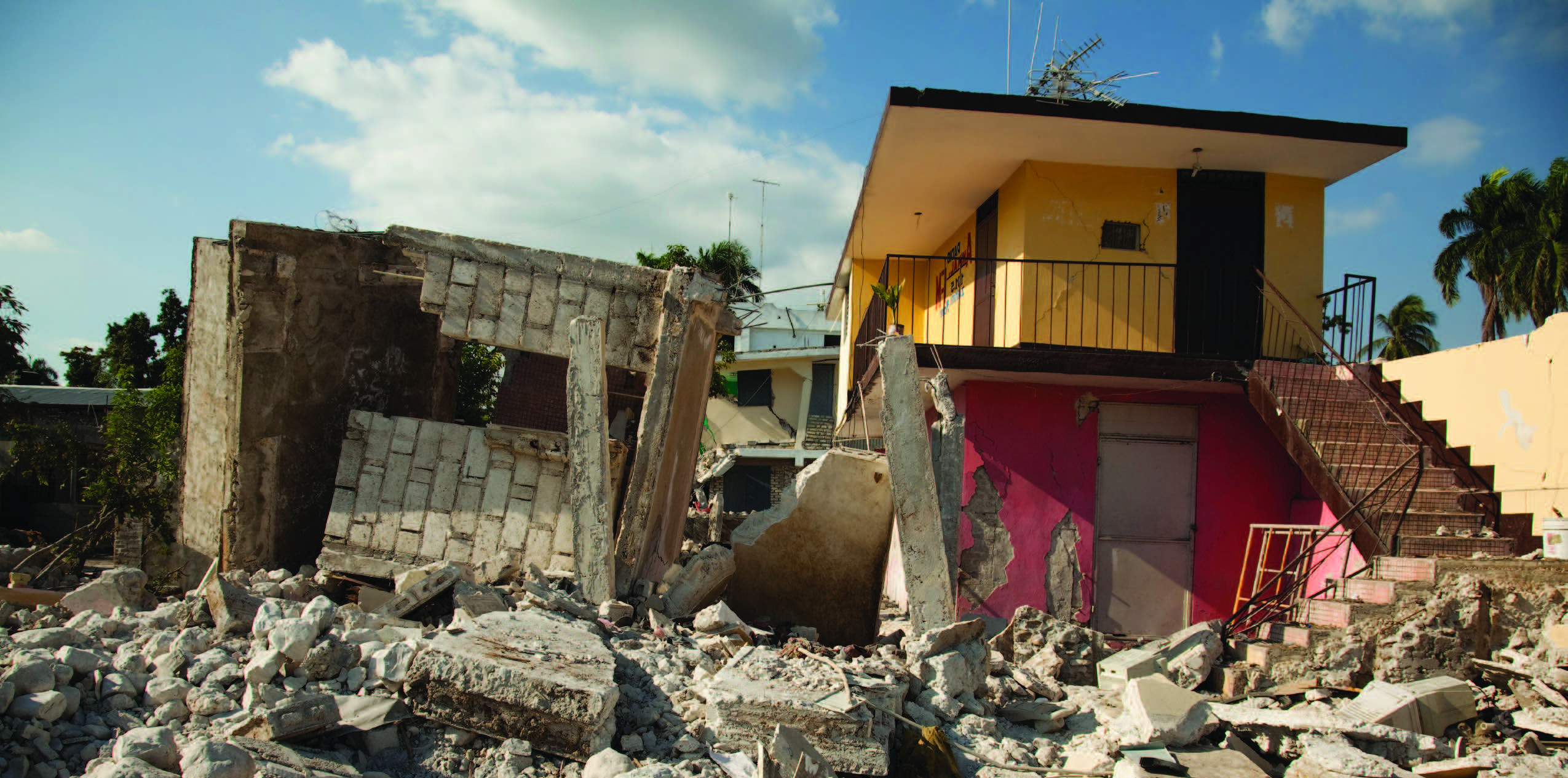Forest fires in California, flooding in Colorado, and tornados in Oklahoma – not to mention hurricanes in Mexico, earthquakes in Pakistan, and volcano eruptions in Indonesia. 2013 has seen natural disasters around the world.
Non-governmental organizations (NGOs) often respond to urgent needs created by such disasters by fielding donations and distributing supplies. But to reach the most people and save the most lives, they must plan responses far in advance.
Enter: the engineers.
Industrial and systems engineers are known for designing optimization tools and models to ensure the effectiveness and efficiency of organizations’ work. For a humanitarian group facing the wake of a natural disaster, mitigation and decision aid tools become even more vital given the high degree of uncertainty and limited infrastructure and resources. Now, a College of Engineering alumna’s work in this field is being adopted by Habitat for Humanity International (HFHI).
Industrial and systems engineering (ISyE) alumna Shelly Ballard, who earned a master’s degree in 2012, teamed up with Professor Julie Swann of the Health & Humanitarian Logistics Center (HHL) for her thesis. Swann and Professors Özlem Ergun and Pinar Keskinocak cofounded and now direct the Center, which helps organizations improve logistics in emergencies and long-term development.
“We find that students can get really excited about using engineering skills in nontraditional environments like humanitarian systems,” Swann says.
Following a major disaster, one of the most urgent needs is adequate shelter. Ballard collaborated with Swann to design a product-mix optimization tool for Habitat for Humanity International to address a classic problem: How can an organization allocate limited resources to impact the most people for the least time and money?
Habitat, headquartered in Americus, Ga., maintains a large presence in Atlanta and throughout the world. It provides shelter assistance for people affected by disasters through its Disaster Risk Reduction and Response program, which offers “products” like damage assessment, transitional housing, home repair, latrine/ sanitation builds, and disaster and hygiene training and kits.
Habitat’s senior director of global disaster response, Kip Scheidler, summarizes: “We have a variety of ‘products’ in our toolkit that we can bring to bear after a disaster to help a community recover. Deciding the most effective mix of those is not always easy, and yet it is essential if we are going to maximize our limited resources.”
To help Habitat meet those goals, Ballard worked with the organization to decide which products and services would offer the most beneficial impact.
Using Open-Solver, free optimization software, Ballard and Habitat assessed the products and services Habitat offers after a disaster, the available resources and costs, and the measurable effectiveness of each type of product. For the tool’s “input,” Ballard looked at resources needed, constraints (such as time and budget), and available resources (including funding, materials, and volunteers) to create an effectiveness score. That score, along with input from Habitat, was then used to identify an optimum product mix.
In her analysis, Ballard used Hurricane Felix as an example. The Category 5 storm hit the coast of Nicaragua in 2007, destroying more than 10,900 homes and leaving 45 percent of the population without sanitation facilities. Using her tool, Ballard calculated an optimal product mix that showed a several-fold improvement in overall effectiveness compared to the mix of products actually used following the disaster.
Her methods offered the possibility of a much greater impact on the community for the same cost.
This type of industrial engineering, optimizing “value for money,” is important for organizations like Habitat for Humanity, because it shows donors that their money is being used in the most efficient and effective ways possible.
Swann points to the important role that universities like Georgia Tech play not only in developing new science but in translating scientific approaches into practice, which can aid companies, NGOs, or government in decision-making under intense pressure.
“I had actually participated in building Habitat houses when I was a freshman at Georgia Tech,” she recalls, “so it is exciting to work with students to ‘build’ in a new capacity for Habitat.”
In addition to her work on the product optimization tool in Atlanta, Ballard also traveled to the Caribbean on a research trip with HHL as part of Georgia Tech’s Caribbean Hazard Assessment Mitigation and Preparedness interdisciplinary project. These countries at high-risk for hurricanes – such as Haiti, where Habitat has served more than 2,000 families in the last 30 years – are examples of areas where the tool could be effective.
“It's been such an honor to see the tool I built for Habitat being improved upon, and something Habitat is excited to share,” says Ballard. “Perhaps the most exciting part is seeing organizations catch on to the vast potential of these tools! If the major players start building and using these tools, just imagine how many more people and families could be reached."
Ballard has moved on from Georgia Tech, but HHL and Habitat continue to expand on her work. Current ISyE student Le Jiang is volunteering with Habitat’s Atlanta team to further improve what’s now called the “Shelly tool.”
“For a nonprofit, having an optimization tool puts HFHI at the forefront of their sector,” Jiang says. “In combination with successfully quantifying effectiveness, this could potentially thrust HFHI into leadership in the nonprofit community.”
Written By Meghan Smithgall
This article first appeared in the College of Engineering 2014 Winter issue.
For More Information Contact
Barbara ChristopherIndustrial and Systems Engineering404.385.3102



